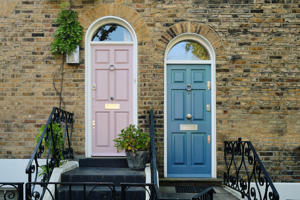When does new safety regime apply to commercial units?
Much attention has been paid to the impact of the Building Safety Act 2022 on residential property – but it also affects commercial premises where these are deemed part of higher-risk buildings.
Many in the property and construction industry in England are still getting to grips with the full scope of the Building Safety Act 2022 and the accompanying regulations.
However, while significant industry attention has been paid to construction requirements and remedying defects, the 2022 Act has a much wider impact than this. How, for instance, might it affect works to commercial units?
Relevant regulations may affect works
The act is perhaps most likely to apply to such works where commercial units are sufficiently connected to higher-risk buildings (HRBs).
Where occupied – that is, when they are not still being constructed – HRBs are generally defined as being at least 18m or seven storeys tall and containing at least two residential dwellings.
There are some exceptions to this such as hotels, hospitals and care homes, as outlined in regulation 8 of the Higher-Risk Buildings (Descriptions and Supplementary Provisions) Regulations 2023 (DSPR).
Where there is a HRB, the Building (Higher-Risk Buildings Procedures) (England) Regulations 2023 (HRBP) will apply to anyone undertaking certain works there, whether landlord or tenant.
The HRBP came into force on 1 October and contain certain transitional provisions which should be checked in appropriate cases.
The HRBP require the relevant works to be approved by the Building Safety Regulator (BSR) rather than applying for approval from the local authority. This adds complexity and can thus cause delay, although the regulator is supposed to make its decision within eight weeks.
Applicability depends on building definition
Some landlords and tenants may not yet have appreciated they could be required to comply with the HRBP and seek approval from the regulator - even where they are carrying out works to commercial premises - largely because coverage of the 2022 Act and other relevant relevant regulations has tended to focus on residential buildings.
The applicability of the regulations depends on whether or not a commercial unit falls within the definition of an 'independent section' under the DSPR; if not, then it could be regarded as part of an HRB, to which the higher-risk regime of building control will apply.
Regulation 4 of the DSPR provides that 'where a structure that is not attached to any other structure contains one or more independent sections, each independent section is a "building"'.
An 'independent section' is defined as one that:
'a) has access, which can be reached from anywhere in the section, for persons to enter and exit the wider building; and
'(b) either—
'(i) has no access to any other section of the wider building; or
'(ii) only has access to another section of the wider building which does not contain a residential unit.'
Access is in turn defined as a 'doorway, archway or similar opening[,] but does not include a doorway, archway or similar opening intended for exceptional use including emergency use or use for the purpose of maintenance'.
Whether section is independent determines position
If a purely commercial unit satisfies the criteria for an independent section, then it will be its own building for the purpose of the DSPR and not part of the wider HRB. In such cases, unless the proposed works interact with the wider building, or do but are exempt, the HRBP should not apply and the BSR will not need to oversee works.
However, the position will be very different if the commercial unit is considered to be the same building as the residential parts of the HRB; or where, even if it is an independent section, the proposed works are outside the commercial unit demise and as a consequence interact with the wider building.
In our opinion, in order to assess this position landlords and tenants should analyse whether a commercial unit:
- has its own entrance and exit to the outside, accessible from anywhere in the unit itself
- either has no access to any other section in the overall structure, except for exceptional use in emergencies or for maintenance;; or only has access to another section of the overall structure that does not contain a residential unit.
The nature of the works proposed – and which parts of the building they engage with – also needs to be considered.
Government examples can clarify context
This may all sound convoluted; but the government provides a number of examples illustrating how it regards an 'independent section'. Two in particular are useful in a commercial context.
- A seven-storey residential tower with a separated gym on the ground floor, where residents have their own entrance and exit to the outside and the gym has a separate access for its customers, who have no access to the residential parts. Here, the tower and the gym will each be regarded as an independent section and its own 'building' for the purposes of HRBP.
- A seven-storey residential tower with a commercial café on the sixth floor, where residents have their own entrance and exit to the outside but café customers also use this route for access. In this case, the café cannot be an independent section because it uses other parts of the overall structure day-to-day. The two parts would therefore be considered a single building for the purposes of HRBP.
Clarity needed on provision of exceptions
Particular kinds of work are excluded from the HRBP under Regulation 11(2); namely, these are 'scheme work', 'exempt work' and certain emergency work.
Assessing whether a particular project falls under these descriptions would require a detailed review of the regulations. However, by way of example, 'scheme work' may include 'installation of a mechanical ventilation or air conditioning system or associated controls, in a building other than a dwelling, that does not involve work on a system shared with parts of the building occupied separately' (see paragraph 5 of Schedule 3 to the Building Regulations 2010).
There may be some uncertainty around some of these descriptions, though, particularly where there is an overlap between such work and other works being undertaken to the building.
Works inside and outside the demise are also a potentially troublesome area. It remains to be seen how these will be interpreted by the courts, and what the full extent of involvement of the regulator will be.
Careful consideration advised before works start
It is clear that those who own or manage mixed-use buildings need to check carefully before starting or allowing any works to a commercial – or residential – unit to which the new higher-risk regime could apply.
This means checking the extent of any connection between a commercial unit and an adjacent residential HRB, and whether the proposed work falls under the HRBP or counts as an exception.
If the higher-risk regime does apply there will be a significant administrative burden, including updating the golden thread of information.
While tenants and landlords alike will want to ensure that they comply with the HRBP where these apply, landlords should be particularly careful to put processes in place to ensure tenants’ cooperation, so the accountable persons under the 2022 Act can fulfil their obligations.
This article was originally posted on the RICS website on Tuesday 25 June.














